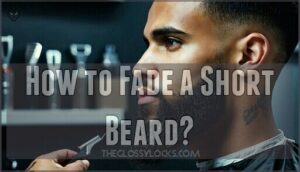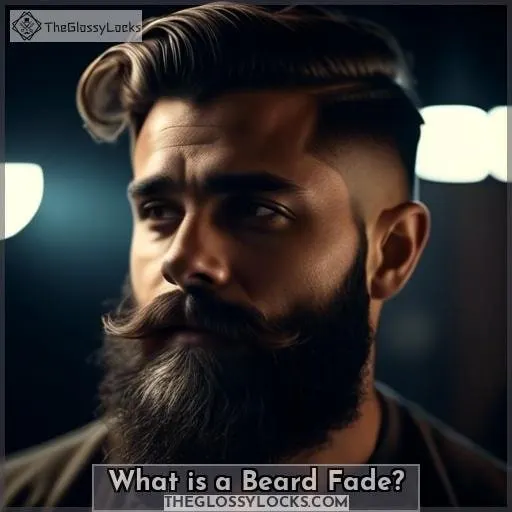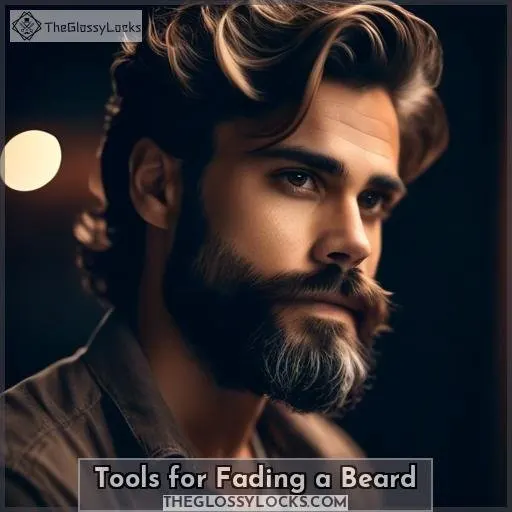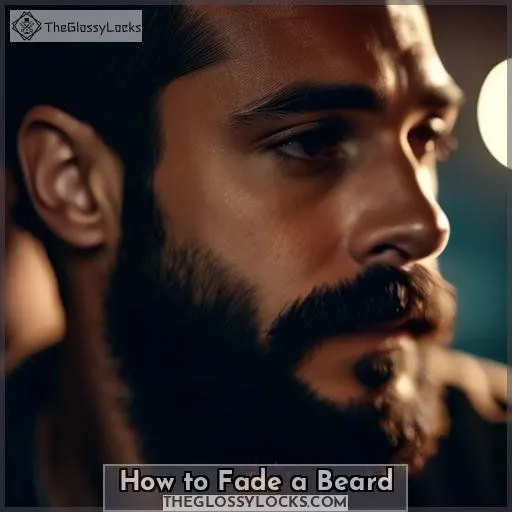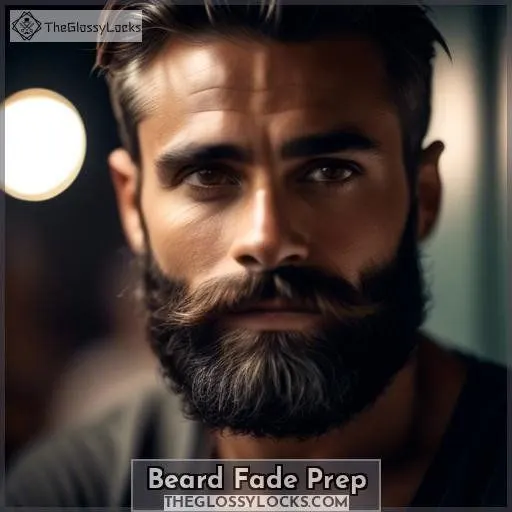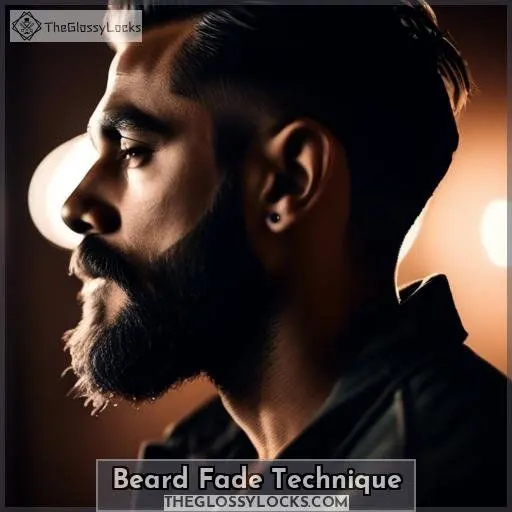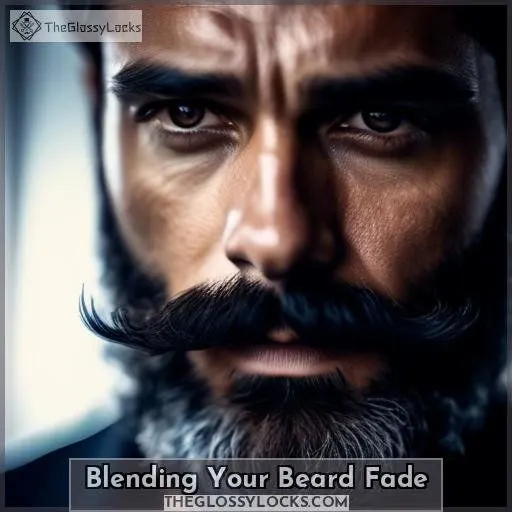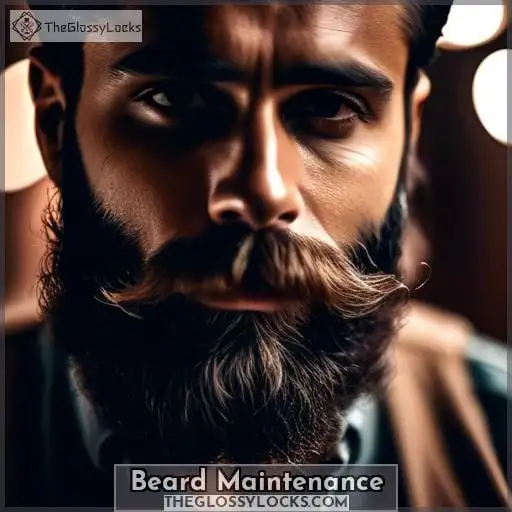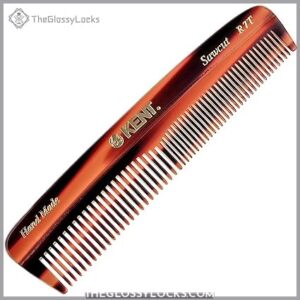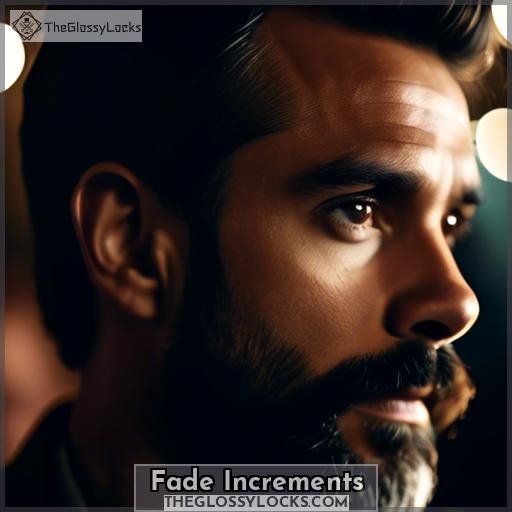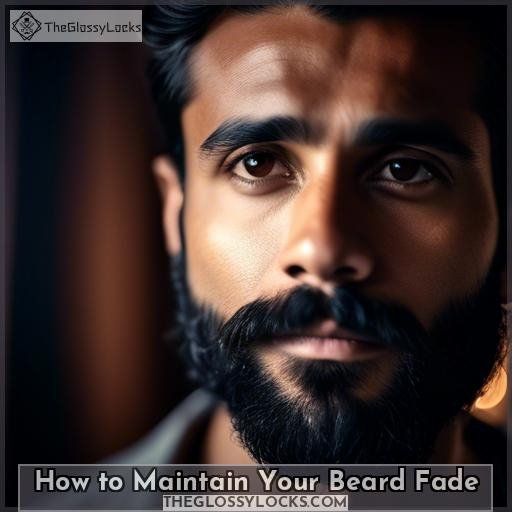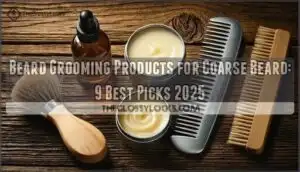This site is supported by our readers. We may earn a commission, at no cost to you, if you purchase through links.
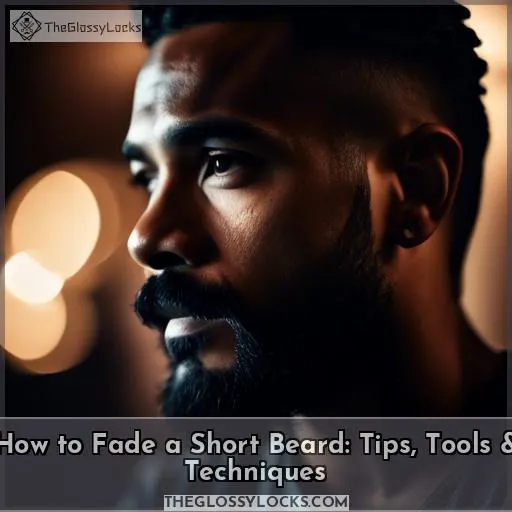 Mastering how to fade a short beard elevates your grooming prowess.
Mastering how to fade a short beard elevates your grooming prowess.
This guide empowers you to sculpt a seamless, tapered look with surgical precision.
Unlock the techniques for a flawless transition from neatly trimmed sideburns to a fuller, stylishly faded beard.
Wield control over your facial hair, accentuating your rugged masculinity with a meticulously blended fade.
Prepare to command attention and exude confidence with this ultimate styling authority.
Table Of Contents
- Key Takeaways
- How to Fade a Short Beard?
- What is a Beard Fade?
- Tools for Fading a Beard
- How to Fade a Beard
- Beard Fade Prep
- Beard Fade Technique
- Blending Your Beard Fade
- Beard Maintenance
- 6 Best Products for Fading a Beard
- Fade Increments
- How to Maintain Your Beard Fade
- Frequently Asked Questions (FAQs)
- Conclusion
Key Takeaways
- A beard fade is a stylish tapered look that softens hard lines and creates a more natural appearance.
- To achieve a beard fade, you’ll need the right tools, such as a beard trimmer with adjustable length guards and a beard comb (optional).
- The process starts with preparing your beard by washing and detangling it, then trimming it to a uniform length.
- Maintaining your beard fade requires regular trimming every two weeks and the use of high-quality beard products like oil or balm to lock in moisture, promote hair growth, and maintain the fade shape.
How to Fade a Short Beard?
To fade a short beard, follow these steps:
- Start by trimming an inch above your jawline, with a length setting one below the overall length of your beard. This will slightly trim the beard hair down to start the fade.
- Shorten the blades again, before trimming another inch towards your sideburns. Repeat this process, moving up in one-inch increments until the top of your sideburns blend seamlessly with the sides of your haircut.
- For a cleaner look, you can also trim your cheekline and moustache, following the natural shape of your face.
- Keep up with maintenance by trimming your beard every week or as needed to prevent the fade from becoming too noticeable.
What is a Beard Fade?
A beard fade is a stylish tapered look that softens hard lines and creates a more natural appearance. It’s a technique that involves gradually reducing the length of your beard, similar to a hair fade. The fade length and blending techniques can be tailored to your beard shape and hair texture, ensuring a bespoke look. A beard fade can be applied to the sideburns, under neck, or cheeks, and it’s not merely about trimming the beard; it’s about navigating the complexities of the ever-evolving world of beard trimming.
To achieve a beard fade, you’ll need the right tools, such as a beard trimmer with adjustable length combs and a beard comb (optional). The process starts with preparing your beard by washing and detangling it, then trimming it to a uniform length. You’ll define your neck and cheek lines, and then start with the highest guard and work your way down, using a scooping motion to cut the length of your neckline.
Blending is key to a successful beard fade, and it’s advisable to practice until you master the technique. It’s not merely about trimming an inch above your jawline and another towards your sideburns; it’s about ensuring continuity of slightly shorter hair and creating an imperceptible blending effect.
Maintaining your beard fade requires regular trimming every two days, and it’s essential to use high-quality beard products like oil or balm to lock in moisture, promote hair growth, and maintain the fade shape. With the right tools and techniques, you can unlock the secrets to a stylish tapered beard that’s designed to enhance your appearance.
Tools for Fading a Beard
To achieve a flawless fade, you’ll need the right tools. Start with a beard trimmer that features adjustable length combs, allowing you to easily switch between different guard settings. A beard comb is also a handy addition, helping you navigate the complexities of beard grooming.
For trimming your mustache, consider using a comb with teeth specifically designed for that purpose. When shaping your cheekline, a high-quality comb will be your best friend. Don’t forget to incorporate facial hair products like beard oil or balm into your routine. These essentials lock in moisture, promote hair growth, and maintain the fade shape.
Length guards are crucial for ensuring crisp lines and a smooth graduation of length. When it comes to side fades, start with the highest guard setting, slightly shorter than your beard length, and work your way down. Remember, blending should be imperceptible, so use the lowest guard towards your sideburns.
In the realm of beard care, it’s not merely about trimming and shaping. It’s about unlocking the secrets to a well-groomed look. Seeking more than just a trim, our suite of products is designed to enhance your style, from beard oil application to mustache trimming technique. It’s all about mastering the art of beard grooming.
How to Fade a Beard
Mastering the Art of Beard Fading
Fading a beard is a skill that requires patience and precision. Here’s a step-by-step guide to help you achieve the perfect tapered look:
- Prepare Your Beard: Start by washing your face and beard with a gentle cleanser. Trim your beard to your desired length, tighten the neckline, and cut loose hairs. Apply beard oil to lock in moisture and promote hair growth.
- Choose Your Fade Style: Decide on the fade style you want. You can create a straight or rounded line from your sideburns to your mustache. For a more natural look, blend the top of your sideburns with the sides of your haircut.
- Trim with Precision: Use a beard trimmer with adjustable length combs. Start with the highest guard and work your way down. Use a scooping motion to cut the length of your neckline. Switch to a lower guard and trim against the grain for a closer cut. Repeat this process, moving up in one-inch increments.
- Maintain Your Fade: Trim your beard every two days to keep the fade looking sharp. Practice makes perfect, so don’t be discouraged if it takes a few tries to get it right.
Beard Fade Prep
Before you dive into the world of beard fading, it’s crucial to prepare your facial hair for the transformation.
- Wash and Dry Your Beard: Start by cleansing your beard and face with a gentle beard wash. Rinse thoroughly and dry your beard with a microfiber towel or let it air dry.
- Trim Your Beard: Use a beard trimmer with adjustable length combs to trim your beard to your desired length. Be sure to set the trimmer to a length slightly shorter than your target fade to ensure a smooth graduation of length.
- Define Your Neckline: Tighten your beard neckline by trimming the hair around your Adam’s apple. This will create a clean, defined line that underpins the rest of your beard fade.
- Trim Your Cheekline: Use your trimmer to shape your cheekline, ensuring it’s even and blends seamlessly with your beard.
- Prepare Your Beard for Maintenance: Invest in high-quality beard products, such as beard oil or balm, to lock in moisture, promote hair growth, and maintain your fade shape.
By following these steps, you’ll set the foundation for a flawless beard fade. Remember, the key to a successful fade is meticulous preparation and attention to detail. So, take your time and enjoy the process of unlocking your beard’s full potential.
Beard Fade Technique
Ready to master the art of the beard fade? Here’s how to ensure your facial mane commands respect and turns heads:
- Choose your trimmer wisely. The right tool is your ticket to a sharp, precise fade. Think of it as your trusty sidekick in the quest for facial finesse.
- Map out your fade styles. Your face is the canvas, and the fade is your art. Whether you’re going for a bold cheek line or a subtle neck line, plan your approach like a general plotting a winning strategy.
- Embrace the scooping motion. It’s not just a trim; it’s a dance. With each scoop, you’re sculpting a masterpiece on your jawline, blending beard length seamlessly into your facial shape.
- Seek out top-notch products. After crafting your fade, nourish it with recommended products. They’re the secret sauce that keeps your beard looking like it’s fresh out of the barbershop.
Blending Your Beard Fade
Blending your beard fade is a crucial step in achieving a stylish tapered look. It’s not just about trimming the right length; it’s about creating a smooth graduation of length that softens hard lines and creates a more natural appearance.
- Continuity: Ensure that the slightly shorter hair blends seamlessly into the longer hair. This can be achieved by using the same trimmer setting for the entire length of the fade, or by gradually decreasing the setting as you move down your face.
- Imperceptible Blending: The blending should be so subtle that it’s not noticeable to the naked eye. This requires a steady hand and a keen eye for detail. Practice makes perfect, so don’t be discouraged if it takes a few tries to get it right.
- Professional Beard Trim: Consider visiting a professional barber or stylist for your first beard fade. They can guide you through the process and help you achieve the perfect blend. Once you’ve mastered the technique, you can maintain the fade at home with the right tools and products.
- Beard Product Recommendations: High-quality beard products, such as beard oil or balm, are essential for maintaining your beard and fade. They lock in moisture, promote hair growth, and help to style your beard. Look for products that are designed to enhance your beard, not just maintain it.
- Styling Tips: Experiment with different taper lengths and neckline styles to find the look that suits you best. Remember, the fade isn’t just about the length of your beard, but also the shape of your face and the style you’re going for.
By following these blending techniques and incorporating the right products and styling tips, you’ll be able to maintain your beard fade and enjoy a stylish, tapered look that’s all your own.
Beard Maintenance
To maintain your beard fade, you’ll need to invest in high-quality beard products and a consistent routine. Start by using a beard oil or balm to lock in moisture, promote hair growth, and maintain the fade shape. These products are essential for a well-groomed look.
When it comes to beard care, remember that practice makes perfect. Don’t be afraid to experiment with different styles and lengths. Whether you’re seeking a natural look or something more meticulously crafted, your beard is a reflection of your personality.
To keep your beard fade looking sharp, trim it every two days. Use an upward motion to cut against the grain and a downward motion to trim the hair lying flat against your face. This technique will help you navigate the complexities of beard maintenance and create a look that’s tailored to your preferences.
6 Best Products for Fading a Beard
When choosing products for fading your beard, consider a compact Bluetooth speaker for music while you trim, and a waterproof beard trimmer for easy cleanup. You’ll also need a beard comb and grooming brush to keep your beard looking its best.
1. Compact Portable Wireless Bluetooth Speaker
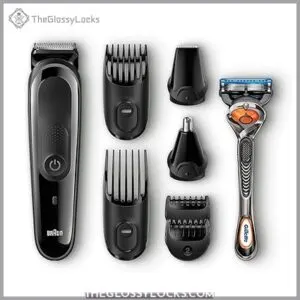
When it comes to fading a short beard, having the right tools is crucial. One of the best products for this task is a compact portable wireless Bluetooth speaker. This device is designed to enhance your grooming experience, offering a seamless blend of convenience and functionality.
Firstly, a Bluetooth speaker allows you to listen to your favorite tunes while you work on your beard. This can make the process more enjoyable, helping you to maintain focus and precision. Additionally, a compact design ensures that the speaker is easy to transport, so you can take it with you wherever you go.
However, there are some cons to consider. For instance, you may need to charge the speaker regularly, which can be inconvenient if you’re frequently traveling. Also, some speakers may not offer the best sound quality, which could affect your overall grooming experience.
- Enhances grooming experience with music
- Compact design for easy portability
- Offers convenience and functionality
- Requires regular charging
- May not offer the best sound quality
2. Gillette Styler Beard Trimmer Waterproof
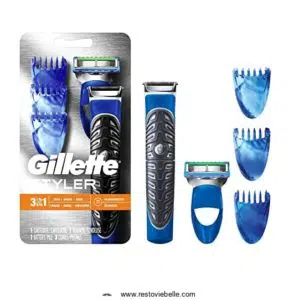
The Gillette Styler Beard Trimmer Waterproof is a game-changer in the realm of beard grooming. This 3-in-1 device is designed to provide a seamless blend of functionality, versatility, and precision, making it an ideal choice for men who take their grooming seriously.
- Easy Grip Handle: The ergonomic handle ensures a comfortable grip, allowing for precise trimming.
- Waterproof Design: The waterproof feature allows for both dry and wet use, providing flexibility in your grooming routine.
- Customizable Styling: With three comb attachments, you can achieve a variety of styles that cater to different hair lengths.
- Fits All Gillette 5-blade Razor Refills: This feature ensures compatibility with a wide range of refills, enhancing your grooming options.
- Limited Length Settings: Compared to other beard trimmers, the Gillette Styler may not offer as many length settings, which could be a drawback for those seeking a more bespoke look.
- Battery Life: While the battery life is sufficient for most grooming needs, it may not be as long-lasting as some other trimmers on the market.
- Price: As a premium grooming tool, the Gillette Styler Beard Trimmer Waterproof may be more expensive than some other options, which could be a consideration for those on a budget. In conclusion, the Gillette Styler Beard Trimmer Waterproof is a robust and reliable choice for fading a short beard. Its blend of precision, versatility, and ease of use makes it a superior option for those seeking a stylish tapered look.
4. Bevel Cordless Beard Trimmer for Men
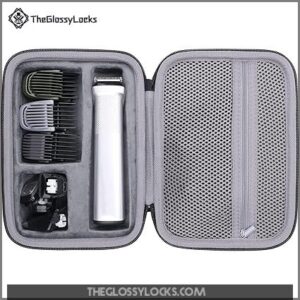 View On Amazon
View On Amazon
The Bevel Cordless Beard Trimmer for Men is a premium grooming tool designed with the expertise of professional barbers in mind. It features a sleek black cordless design, offering a modern and sophisticated look to elevate your grooming routine.
With an impressive 8-hour rechargeable battery life, this trimmer ensures uninterrupted grooming sessions, allowing you to achieve your desired style effortlessly. The tool-free adjustable zero gapped blade provides ultimate precision and control, enabling you to achieve a perfectly groomed beard, mustache, or any desired style with ease.
- Sleek black cordless design
- Long-lasting 8-hour battery life
- Tool-free adjustable zero gapped blade for precision
- Designed with professional barber expertise
- Versatile mustache trimmer
- Higher price point compared to some other trimmers
- May require more upkeep and setup compared to some other trimmers
- Limited to cordless use Additional Features:
- Zero gapped blade for ultimate precision
- Professional barber supplies
- Versatile mustache trimmer
- 8-hour rechargeable battery life for uninterrupted grooming sessions
- Tool-free adjustable blade for easy customization
- Sleek and modern design to elevate your grooming routine
5. Kent R7T Apsley Beard Comb
The Kent R7T Apsley Beard Comb is a must-have tool for maintaining a well-groomed beard. This comb is designed to glide effortlessly through your facial hair without causing any damage or discomfort. It’s made with precision-cut teeth that are hand polished and b■ to create soft, rounded teeth that stimulate your scalp or skin. The comb is also made from cellulose acetate, a non-petroleum based plastic derived from plants, which creates less static in your hair and is saw-cut to ensure a smooth surface that won’t pull or snag hair follicles.
- Effortless Glide: The saw-cut, fine tooth comb glides smoothly through your beard, promoting healthy hair growth and reducing damage.
- Handmade Quality: The comb is made from large sheets of cellulose acetate, ensuring a high-quality, handmade product.
- Versatile: The comb is suitable for all hair types and can be used for both beard care and mustache grooming.
- Price: The comb may be pricier than some other options, but its quality and durability make it a worthwhile investment.
- Size: As a pocket-sized comb, it may not be as large as some other combs, which could be a disadvantage for those with longer beards.
- Material: While cellulose acetate is a good choice for combs, it may not be as durable as some other materials, and the comb could potentially break if dropped. Using the Kent R7T Apsley Beard Comb: To use the Kent R7T Apsley Beard Comb, simply comb your beard in the direction of hair growth to remove tangles and debris. Start at the neckline and work your way up to the chin, then move to the cheeks and sideburns. Remember to comb gently to avoid damaging your beard or skin.
6. Beard Grooming Brush by ZilberHaar
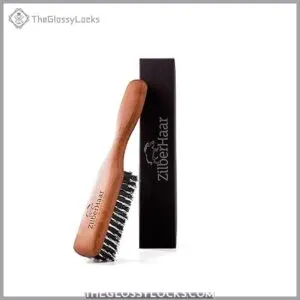
If you’re in the market for a high-quality beard grooming brush, look no further than the Beard Grooming Brush by ZilberHaar. This brush is designed to exfoliate your skin, promote beard growth, and help remedy beard itch.
It’s made with 100% natural boar bristles and a pear wood handle, ensuring a sturdy and long-lasting product. The brush is 6 inches long, making it perfect for men with short to medium length beards.
- Made with 100% natural boar bristles and pear wood handle
- Exfoliates skin and promotes beard growth
- Ideal for men with short to medium length beards
- Lifetime guarantee
- May be too stiff for some users
- Some users have reported issues with customer service and shipping Additional Features:
- The brush is designed to straighten and soften beards naturally
- It’s perfect for men who want to start a beard routine or add to a beard grooming kit
- ZilberHaar beard and hair grooming products are made to last
- The brush comes with a lifetime guarantee and instructions on how to use it effectively If you’re looking for a robust and reliable beard grooming brush, the Beard Grooming Brush by ZilberHaar is definitely worth considering.
Fade Increments
After diving into the best products to keep your beard game strong, let’s shift gears to mastering fade increments. This is where the rubber meets the road, and you take control of your beard’s destiny.
- Start by setting your trimmer to the longest setting that’s just a tad shorter than your overall beard length. This is your baseline.
- Gradually decrease the trimmer settings as you work your way down your face, ensuring each pass blends seamlessly into the next.
- Focus on the areas around your cheeks and sideburns, where precision can really make or break the fade shape.
- Avoid the dreaded box look by ensuring the fade creates a slimmer face illusion, enhancing your features rather than overshadowing them.
- Consistency is key. Stick to a maintenance routine that keeps your beard at a uniform length, ensuring your fade remains sharp and in shape.
How to Maintain Your Beard Fade
To maintain your beard fade, follow these steps:
- Daily trimming: Trim your beard every two days to keep it fresh and maintain the fade. This will make the fading process easier and prevent the need to start from scratch each time.
- Moisture lock: Use beard oil or balm daily to lock in moisture and promote hair growth. These products are essential for beard care and help maintain the fade shape.
- Gradual decrease: When trimming, start with the longest trimmer setting slightly shorter than your beard length and gradually decrease the setting as you move down your face.
Frequently Asked Questions (FAQs)
What are the benefits of a beard fade?
You’ll achieve a sleek, polished look that accentuates your face’s best features. The gradual fade creates depth, adding an edgy yet professional vibe. It’s low-maintenance but high-impact – the ultimate power move.
Can a beard fade be done at home?
Listen up, champ – you can absolutely rock a beard fade at home! With the right tools and a little patience, you’ll be slaying that crisp, faded look like a pro.
How often should a beard fade be maintained?
You’ll want to maintain your beard fade every 2-3 weeks for an impeccable, fresh look. Consistent upkeep prevents unruly growth and sharp lines from appearing, keeping that stylish gradient sharp.
What is the difference between a high-fade and low-fade beard fade?
A high-fade leaves very little hair on the bottom, creating a bold contrast. A low-fade gradually blends into the beard length, offering a smoother, more subtle transition. Go for the high-fade if you crave that edgy look; opt for low if a softer vibe suits you better.
How does beard fading affect the overall appearance of a beard?
A well-executed beard fade makes your facial hair look sleek and stylish. It adds depth, creates dynamic lines, and gives your beard a polished, contoured appearance that commands respect.
Conclusion
From sculpting neatly faded sideburns to achieving a fuller, stylishly tapered beard, you’ve now mastered how to fade a short beard. With precision and control, you can accentuate your rugged masculinity through a seamlessly blended transition.
Embrace this newfound grooming prowess, exuding confidence wherever your finely faded facial hair takes you.

